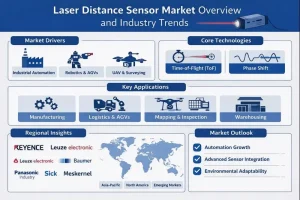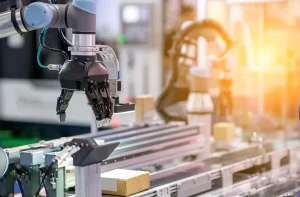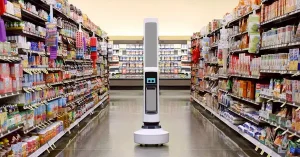AI Adoption Growing in Manufacturing: Transforming the Industry Landscape
AI adoption growing in manufacturing is reshaping the industry in profound ways. As companies seek to enhance productivity, reduce costs, and improve product quality, artificial intelligence (AI) has emerged as a vital tool in achieving these goals. From predictive maintenance to intelligent automation, AI technologies are rapidly becoming integral to manufacturing operations worldwide.
The Rise of AI in Manufacturing
The manufacturing sector has long been fertile ground for technological innovations, and AI represents the latest leap forward. Unlike traditional automation, which relies on rigid programming, AI systems use machine learning algorithms and data analytics to make real-time decisions and continuously improve processes. This adaptability allows manufacturers to respond to changing demand, optimize resource use, and minimize downtime.
Governments and industry leaders alike recognize the potential benefits of AI, contributing to increased investment and development in this area. Studies forecast that the AI market in manufacturing will continue growing at a compound annual growth rate (CAGR) of over 40%, highlighting its rapid adoption.
Key Applications Driving AI Adoption in Manufacturing
Several AI-driven applications are fueling its integration on the manufacturing floor. Here are some of the most impactful:
Predictive Maintenance
Traditional maintenance schedules are often inefficient or costly, leading to unnecessary repairs or unexpected equipment failures. AI-powered predictive maintenance systems analyze data from sensors embedded in machinery to detect anomalies and predict potential failures before they occur. This proactive approach reduces downtime, lowers maintenance costs, and prolongs equipment lifespan.
Quality Control and Defect Detection
Ensuring product quality is critical in manufacturing. AI systems equipped with computer vision can inspect products at high speeds, identifying defects more accurately than human inspectors. These systems learn from vast amounts of image data, enabling them to detect even subtle anomalies, reducing waste and improving customer satisfaction.
Supply Chain Optimization
AI helps manufacturers optimize supply chains by forecasting demand, managing inventory, and improving logistics. Machine learning models analyze historical sales data, market trends, and external factors to predict product demand with high accuracy. As a result, manufacturers can streamline procurement and reduce excess inventory.
Intelligent Robotics
Robots integrated with AI capabilities are transforming production lines. Unlike traditional robots programmed for repetitive tasks, intelligent robots can adapt to new tasks, collaborate safely with human workers, and learn from experience. This flexibility enhances productivity and supports complex manufacturing processes.
Benefits of AI in Manufacturing
The broad adoption of AI in manufacturing brings a host of benefits:
- Increased Efficiency: AI-driven automation accelerates production processes while reducing errors, allowing manufacturers to produce more in less time.
- Cost Reduction: Predictive maintenance and optimized resource management lower operating expenses significantly.
- Improved Safety: AI-powered monitoring systems help detect hazardous conditions early, minimizing workplace accidents.
- Enhanced Innovation: AI tools analyze vast datasets to uncover insights and inform product design and development.
- Sustainability: Efficient use of materials and energy driven by AI helps manufacturers reduce their environmental footprint.
Challenges to Overcome for Wider AI Adoption
Despite the promising outlook, several challenges hinder the full-scale adoption of AI in manufacturing:
- Data Integration: Many manufacturers struggle to collect and integrate data from legacy systems and diverse sources required for effective AI models.
- Workforce Skills Gap: Implementing and maintaining AI solutions demands skilled professionals, and there is a shortage of talent in this domain.
- Initial Investment Costs: AI technologies require upfront investments for hardware, software, and training, which can be prohibitive for small and medium enterprises.
- Cybersecurity Risks: Increased connectivity introduces vulnerabilities to cyberattacks, necessitating robust security measures.
Addressing these challenges requires strategic planning, investment in workforce development, and collaboration between technology providers and manufacturers.
The Future Outlook for AI in Manufacturing
AI adoption growing in manufacturing is more than a passing trend; it is set to become a cornerstone of smart factories and Industry 4.0 initiatives. As AI technologies evolve, their integration with other emerging technologies like the Internet of Things (IoT), augmented reality (AR), and blockchain will unlock new possibilities.
Manufacturers that embrace AI now position themselves to lead in innovation, efficiency, and customer satisfaction. The next decade promises a landscape where intelligent, adaptive manufacturing systems not only optimize production but also contribute to a more sustainable and resilient industrial ecosystem.
Conclusion
The manufacturing industry is undergoing a significant transformation fueled by AI adoption. From predictive maintenance and quality control to supply chain optimization and robotics, AI’s impact is extensive and growing. While challenges remain, the benefits of integrating AI into manufacturing operations are unmistakable. Businesses that invest wisely in AI today will gain a competitive edge, driving the future of manufacturing toward unprecedented levels of innovation and efficiency.




